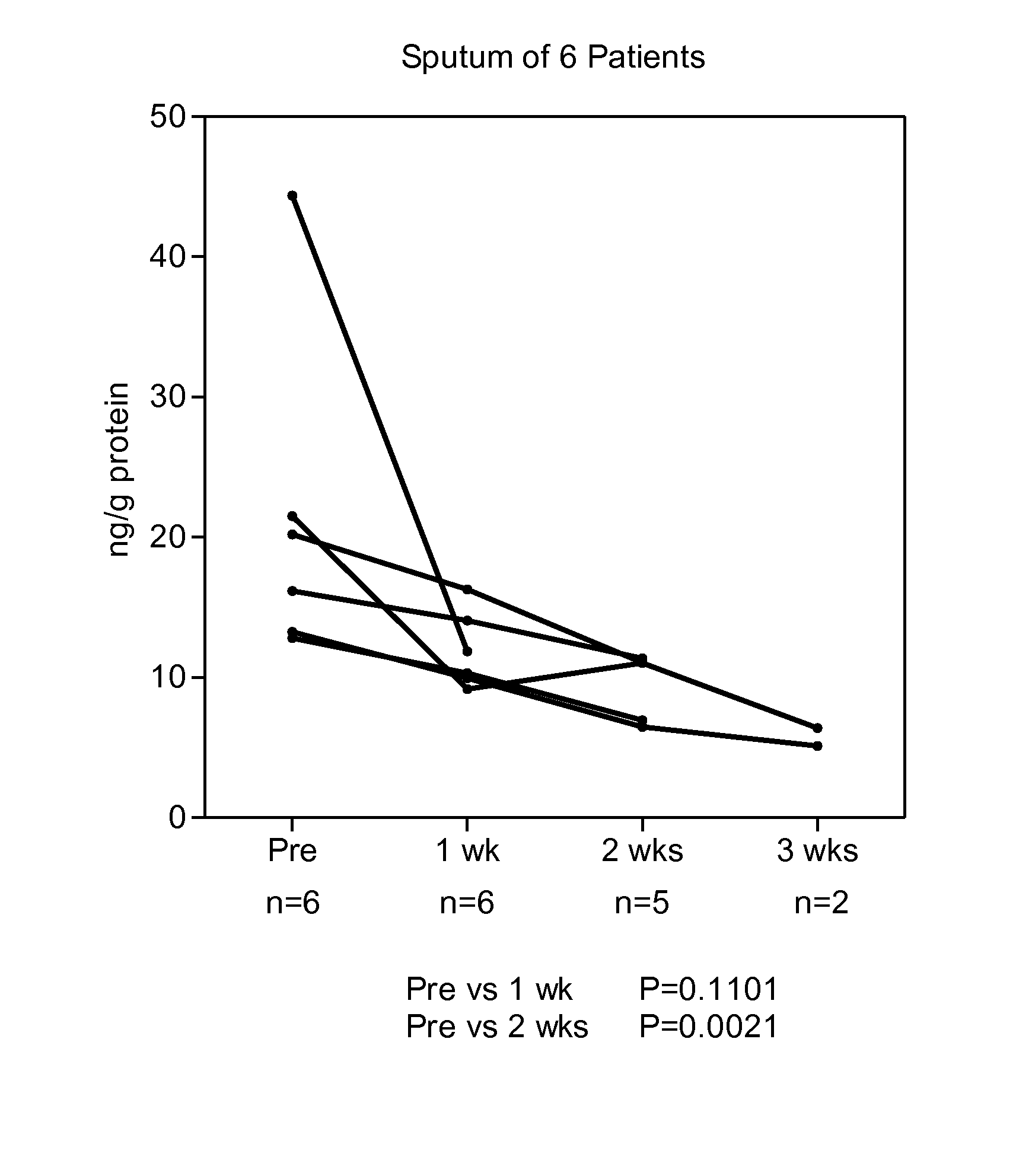Method for Dosage Adjustment of Drugs that Prevent Elastic Fiber Breakdown
a technology of elastic fiber and dosage adjustment, which is applied in the direction of biocide, peptide/protein ingredients, instruments, etc., can solve the problems of ineffective treatment of pulmonary emphysema, right-sided heart failure, and impaired blood oxygenation, and achieves greater specificity and ease of procurement
- Summary
- Abstract
- Description
- Claims
- Application Information
AI Technical Summary
Benefits of technology
Problems solved by technology
Method used
Image
Examples
Embodiment Construction
[0084]The current invention comprises a method of adjusting the dosage of a drug that prevents elastic fiber damage by employing a feedback loop consisting of measuring the levels of the unique elastic fiber breakdown products, desmosine and isodesmosine, primarily in sputum. Neither of these molecules is a natural product of body metabolism because they only appear in sputum in pathological conditions involving the lung. Furthermore, desmosine and isodesmosine are largely bound to peptides in body fluids, and require the use of acid hydrolysis to separate them for measurement, a process which obviates their consideration as a natural body product.
[0085]In subjects with a disease that involves breakdown of elastic fibers, the desired goal of treatment is to reduce the breakdown of these fibers such that the destruction of tissue that depends on the elastic fibers for mechanical support is also decreased. In the case of COPD, the loss of elastic fibers results in dilatation and ruptu...
PUM
| Property | Measurement | Unit |
|---|---|---|
| time | aaaaa | aaaaa |
| volume | aaaaa | aaaaa |
| elastic fiber breakdown | aaaaa | aaaaa |
Abstract
Description
Claims
Application Information
 Login to View More
Login to View More - R&D
- Intellectual Property
- Life Sciences
- Materials
- Tech Scout
- Unparalleled Data Quality
- Higher Quality Content
- 60% Fewer Hallucinations
Browse by: Latest US Patents, China's latest patents, Technical Efficacy Thesaurus, Application Domain, Technology Topic, Popular Technical Reports.
© 2025 PatSnap. All rights reserved.Legal|Privacy policy|Modern Slavery Act Transparency Statement|Sitemap|About US| Contact US: help@patsnap.com

